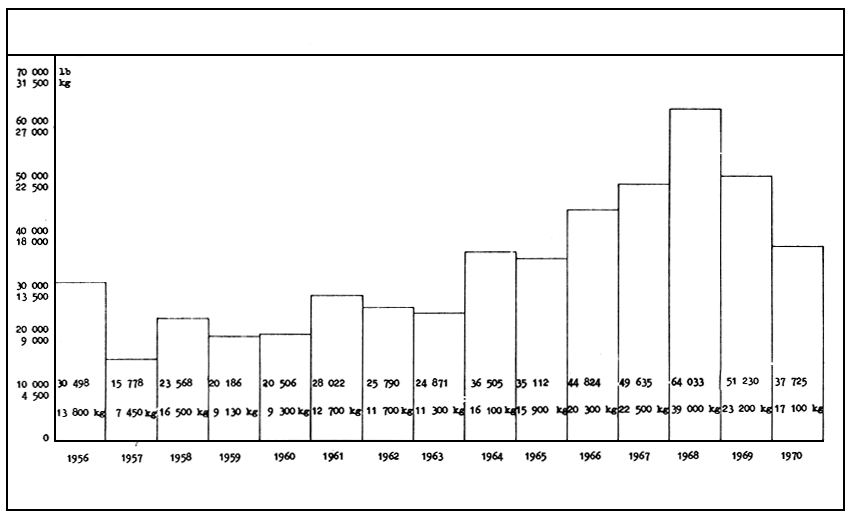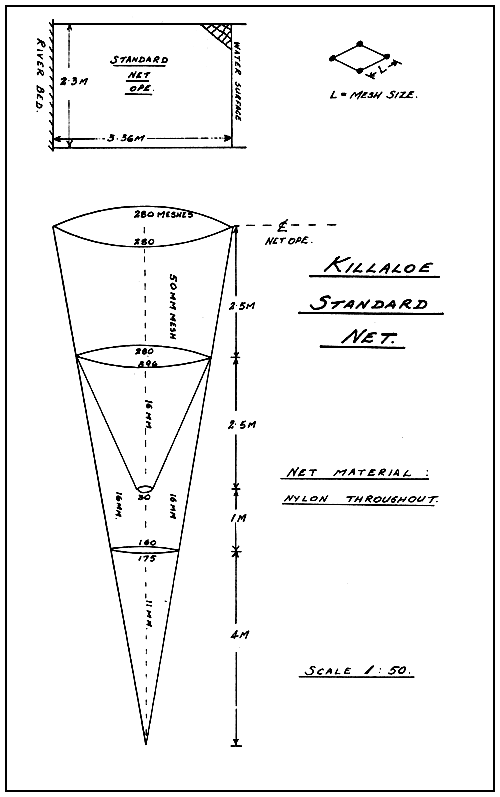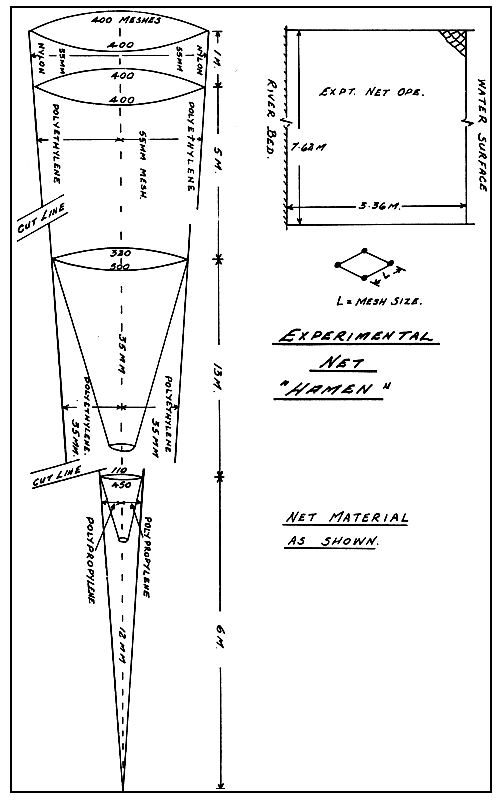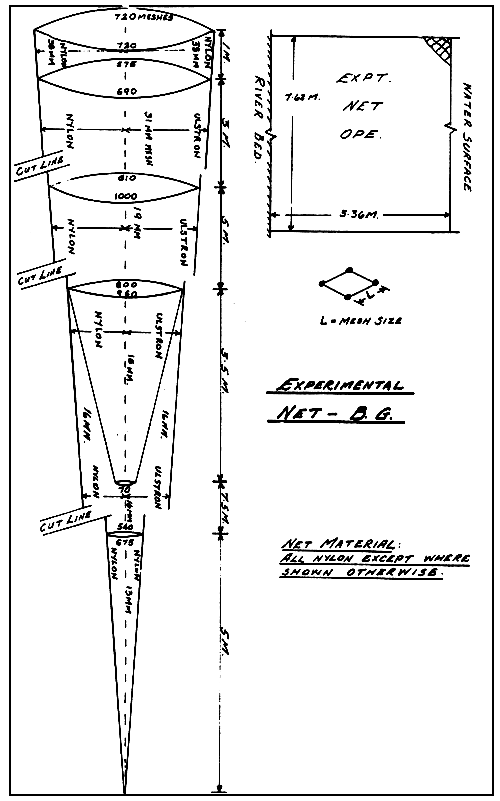by
D.P. O'Leary
Regional Civil Engineer, Electricity Supply Board
Ardnacrusha, Limerick, Ireland
The Electricity Supply Board (E.S.B.) is the owner of the entire fishing rights of the River Shannon above Limerick. The Shannon Hydro Electric Scheme caused considerable interference with all fisheries on the river. Up to the mid-1960's the restoration and development of the salmon fishery occupied the principal interest of the E.S.B. Very little attention was paid to the eel fishery.
In 1958 a new salmon and elver pass was completed at Ardnacrusha Power Station. This was the first determined effort to pass elvers into the Shannon Lakes. Many of these elvers had spent 4–6 years in the tidal section of the river below the Power Station.
During this period the E.S.B. operated an eel weir at Killaloe Bridge. This weir was of an old-fashioned design and consisted of 36 nets, each approximately 2.30 m wide and 3.36 m deep. The catch for this weir is shown in Table I and II. An examination of these tables reveal that there was a considerable increase in the catch from the year 1965–1966 onward. It was thought that this increase might have been due to the larger size elvers which had passed through the Ardnacrusha Fish Pass since 1958.
Table I
| YEAR | CATCH | |
| lb | kg | |
| 1955 – 1956 | 30 498 | 13 800 |
| 1956 – 1957 | 15 778 | 7 450 |
| 1957 – 1958 | 23 568 | 16 500 |
| 1958 – 1959 | 20 168 | 9 130 |
| 1959 – 1960 | 20 506 | 9 300 |
| 1960 – 1961 | 28 022 | 12 700 |
| 1961 – 1962 | 25 790 | 11 700 |
| 1962 – 1963 | 24 871 | 11 300 |
| 1963 – 1964 | 36 505 | 16 100 |
| 1964 – 1965 | 35 112 | 15 900 |
| 1965 – 1966 | 44 824 | 20 300 |
| 1966 – 1967 | 49 634 | 22 500 |
| 1967 – 1968 | 64 033 | 39 000 |
| 1968 – 1969 | 51 230 | 23 200 |
| 1969 – 1970 | 37 725 | 17 100 |
It appeared therefore in 1966 that there was considerable room for improvement in the Shannon eel fishery. The E.S.B. than consulted the Institute for Coastal and Freshwater fishery of the Federal Research Board for Fisheries in Hamburg on how best to improve the eel fishery. Herr Koops visited the Shannon and quickly reached the following conclusions:
The efficiency of the eel weir at Killaloe was very low.
The elver stocks in the Shannon were far too low.
Fishermen fishing for immature eels should be compensated and prohibited from fishing.
Table II

TOTAL EEL CATCH AT KILLALOE WEIR (SHOWN IN TABLE I)
The E.S.B. adopted Herr Koops' suggestions and proceeded on all three recommendations.
Item (a) led to certain experiments with new types of nets.
In the diagrams attached are details of the various nets tried. The standard Killaloe eel net has been in operation for many years and the design remained unchanged except for the change in material from cotton to nylon. The net is very short which made lifting the mouth necessary when fishing the tail. This allowed eels to escape while the net was being fished. During a good run of eels it might be necessary to lift the net 5 or 6 times in the course of the night's fishing operations.
Each arch of the bridge has three standard nets. It was therefore decided to try a large net with a long tail covering the gap formerly covered by three standard nets.
The experimental net (Hamen) was chosen for the first set of experiments and it was put into one of the best fishing opes of the bridge to replace standard nets Nos. 4, 5 and 6 as shown in sketch.

The large net was fished without lifting the mouth.
Fishing started on 21 August 1968 and on 15 October 1968 the efficiency of the nets was assessed by the catches made which were as follows:
| Nets 9, 8, 7 | Nets 6, 5, 4 | Nets 3, 2, 1 |
| 1 268 lb | 119 lb | 1 884 lb |
The normal catch ratio for these nets would have been:
| 60 | : | 80 | : | 100 |
It was obvious now that there was something drastically wrong with the design of the new net. We then tried fishing one of the original standard nets inside the large net for two nights and the catches were as follows:
| 352 lb | 120 lb | 506 lb |
The small net caught the 120 lb. There were no eels caught in the large net. The large net was then removed and replaced by three standard nets and the catches to 30 December 1968 were as follows:
| 5 533 lb | 5 944 lb | 12 168 lb |
The small net fishing inside the big net proved that eels entered the mouth of the large net. They must have escaped through the 55 mm meshes. An examination of the 119 lb of eel caught did not indicate that the net was selective in the size caught. After 30 December 1968 the valves of the large net were tried in different positions but this did not improve the catching performance.
For the year 1969/1970 a new net as shown and described “Experimental Net B.G.” was tried. As will be seen from Table I the total catch for that year was low due to the fact that the winter flood did not come during the normal eel fishing season. It was, therefore, never necessary to lift the standard nets at night. We, therefore, did not have an opportunity to fully evaluate this net. Bearing this in mind it appears that this net offers some promise of increased efficiency. The net was fished throughout the 1969/1970 season and the catches were as follows:
| Nets 9, 8, 7 | Nets 6, 5, 4 | Nets 3, 2, 1 |
| 3 414 lb | 7 185 lb | 9 490 lb |
It is proposed to continue fishing this net for the 1970/71 season and reassess the value of large versus small nets at the end of the season.
DISCUSSION:
O'Leary - Killaloe nets are believed to capture 16 to 40 percent of the run.
McGrath asked for views on why large net failed.
Koops - eels may be able to detect small mesh. Presumably the 55 mm was too large and something between 55 mm and 16 mm should do. Escapement may be due to habit of eels in resting before entering the net, others might escape under net. Clear water might explain the tendency of Shannon eels to keep to the bottom.
O'Leary believed that silt in front of net might discourage entry.

Eel Fishery Development - Net details and velocity curves at Killaloe Weir, Ireland Fig. 1a Killaloe standard net

Fig. 1b Experimental net “Hamen”

Fig. 1c Experimental net - B.G.

Fig. 1d Velocity measurements